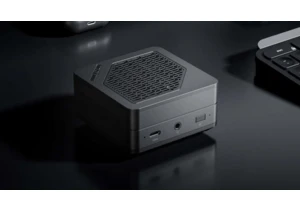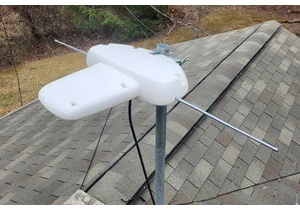A capture card is a niche PC component that you may be considering if you’re planning on recording your gameplay or live streaming. But how do you know if you really need one?
The direct answer is: If you game on consoles and want to record or stream content from them, then — yes, you will need one. Then again, if you’re just wanting to stream or record gameplay from your PC, a capture card is generally not needed, with the odd exception.
What is a capture card?
In a nutshell, a capture card captures an input signal from a device like a game console, camera, or computer and converts it into a digital signal format that can be saved, edited, or even broadcast live via your PC.
A capture card also acts as a passthrough device allowing the video and audio signal to pass through it to be displayed on a monitor, so that you can see what you’re recording or streaming in real time. Want to stream or record Let’s Plays and strike it rich on Twitch? Then a capture card can make that happen.
These devices come in two main types: There are the internal capture cards, like the Elgato Game Capture 4K60 Pro Mk.2, that need to be installed directly into your motherboard via a PCIe slot, or there’s the external variety, like the AVerMedia 4K capture card.
Both options can capture great quality video but there are pros and cons of each. Internal cards benefit from your PC’s fast PCIe bandwidth, so their latency is excellent, but they have to stay put in your motherboard.
On the other hand, external cards may have slightly higher latency but have become quite popular because of their portability — they require no installation and can be used on the fly with a laptop.
Most external capture cards require an HDMI cable connection to the device to capture the content, but a USB cable will usually suffice as the connection between the card and your PC. These cards also come compatible with different streaming software apps, like Twitch, YouTube, OBS, XSplit, and Streamlabs.
It’s important to note that a capture card isn’t a way to spare your PC from experiencing lag. You’re still going to need some decent hardware to deal with the load on your CPU and GPU from recording or streaming.
Recording or streaming from your PC
The reason you can pass on buying a capture card if you intend on streaming or recording directly from your PC is simply because the signal is coming directly from it; there’s no need for any signal conversion or passthrough.
Instead of buying a capture card, you just need good video recording or streaming software — like the apps I mentioned above.
The one time you might want to invest in a capture card if you’re just working with your PC, however, is if you’re capturing directly from a DLSR camera. In this case the video source will likely need proper conversion or passthrough for your PC to read the signal.

Capture cards can be internal or external to your PC. Pictured is the Elgato HD60 X external capture card.
Elgato
Another common question gamers ask is whether they need a capture card if they own a PlayStation 5 console, because of the fact the PS5 can record video directly. In this case, you should probably still get one, since a capture card will give you better-quality video, and you will also enjoy more options to save and import your videos.
How to find the right capture card
Once you’ve decided on either an external or internal capture card, the next step is to decide on the resolution. Most capture cards can record video at either 1080p, 1440p, or 4K.
If you plan on recording at 4K, the main thing to check for is that the capture card has 4K passthrough. Getting a 4K-capable card will also future proof your purchase — it’s what more content creators will be capturing as internet bandwidths continue to improve.
Most 4K capture cards also allow you to record at lower resolutions — say 1080p. If you have a high refresh-rate monitor or TV, your videos will have a higher FPS rate than if you were to record at 4K too, so they’ll be less prone to motion blur.
You should also check that the capture card you’re considering has the right kind of interface for your PC. Checking that it supports USB-C, USB-A, HDMI, or a combination of these ports, can save you the hassle of having to buy adapters.
So, in summary, a capture card is most useful if you want to try your hand at streaming or recording Let’s Plays or other content from your game consoles or other devices. If that’s your schtick, you should definitely go ahead and get one.
Connectez-vous pour ajouter un commentaire
Autres messages de ce groupe

Just having a password set on your PC in Windows 11 isn’t a sure way


TL;DR: Replace Adobe Acrobat with a lifetime license

The NHL postseason begins Saturday, April 19. Games will air on ESPN,

A mini PC can be a great, affordable alternative to a laptop if you d


Back at CES 2025, Samsung revealed their latest monitors including th
